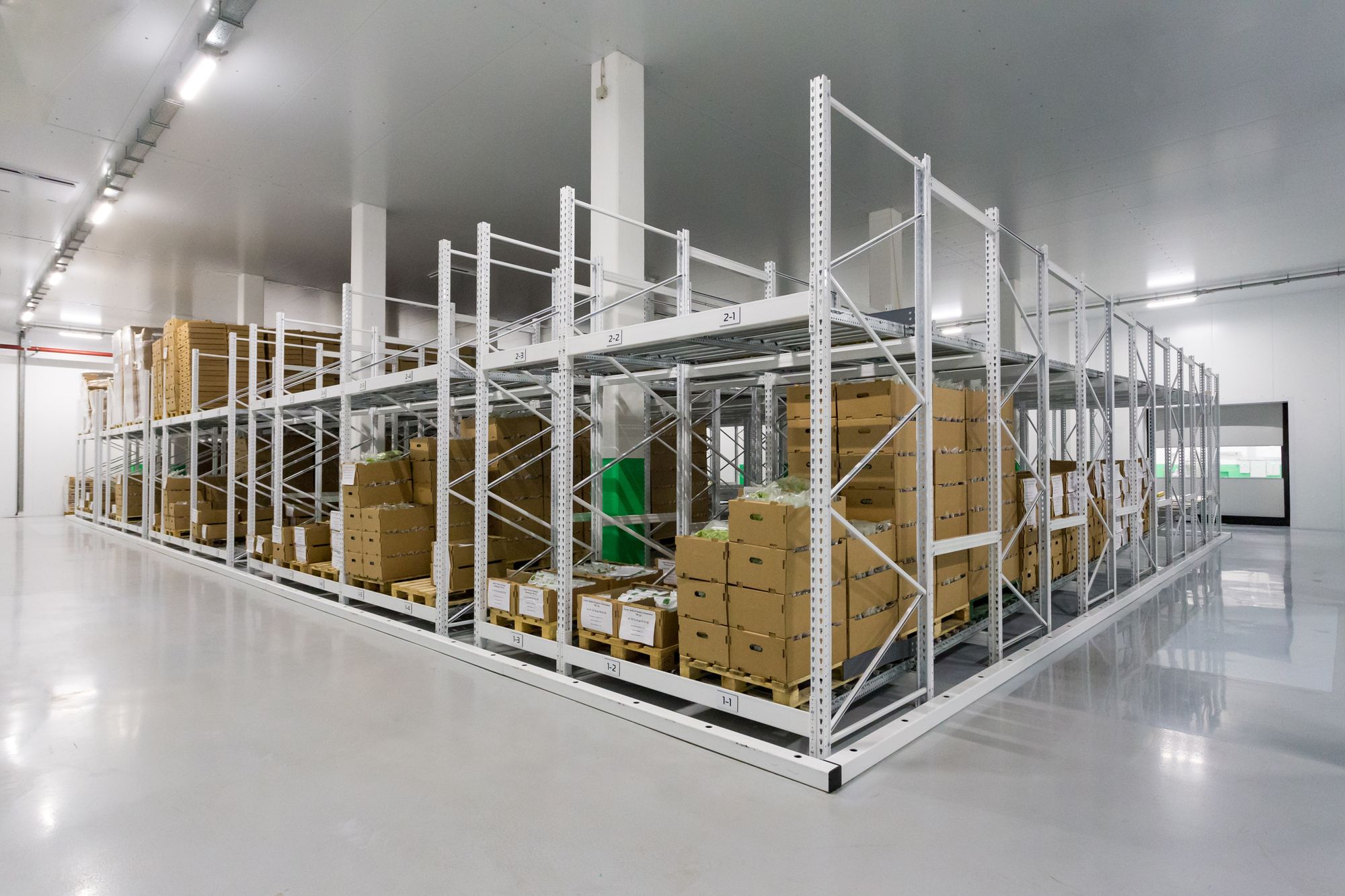One of the most important components of every business plan is inventory. Effective inventory management is something that business owners constantly stress since it can make or ruin their company.

While some business owners are aware of the relevance and necessity of regularly managing inventory, others are unaware of this fact, allowing their company to slip between the gaps.
If, as a business owner, you wish to avoid this, you must follow the 80/20 inventory management rule. If you are wondering what this inventory management rule is, continue reading this article!
This article covers the following:
- What is the 80/20 inventory rule?
- How does the 80/20 inventory rule work?
- What are the benefits of the 80/20 inventory rule?
- How to implement the 80/20 inventory rule?
- What are the common challenges of the 80/20 inventory rule?
- What are the tips for making the 80/20 inventory rule work for you?
- What are the alternatives to the 80/20 inventory rule?
- How can Deskera assist you?
What is the 80/20 Inventory rule?
The 80/20 inventory rule is a rule of thumb that is used to optimize inventory management and maximize efficiency. It states that 80% of a company’s profits come from 20% of its items.
This rule is used by businesses of all sizes and industries to identify which items are the most profitable and should be stocked most heavily while reducing the amount of inventory needed to maintain a healthy balance sheet.
The 80/20 inventory rule is based on the Pareto Principle, which states that 80% of outcomes come from 20% of inputs. In this case, it applies to inventory management, where 80% of sales come from 20% of items.
This is an important concept to understand for businesses because it helps them identify which items are most important to stock and which items are not as profitable and can be de-emphasized in terms of inventory levels.
The most common way to implement the 80/20 inventory rule is to rank all items in order of sales. Once the top 20% of items have been identified, they should be stocked heavily and given priority in terms of ordering and inventory management.
The other 80% of items can be managed more conservatively, as they are not as profitable and will not have as strong of an impact on the bottom line. The 80/20 inventory rule can also be used to identify seasonal trends.
For example, if a retailer knows that certain items tend to sell more in the summer or winter months, they can use the 80/20 rule to stock more heavily during those times of the year.
This can be especially helpful for seasonal businesses that experience a spike in sales at certain times of the year. While the 80/20 inventory rule is a useful tool for optimizing inventory management, it is important to remember that it is only a rule of thumb and should not be followed blindly.
Every business is different and has different needs, so it is important to tailor the approach to the specific business and its specific needs. In addition, the 80/20 inventory rule does not take into account other factors that can impact inventory management, such as customer demand, supply chain costs, and lead times.
For example, a business may stock more of a particular item even if it is not one of the top 20% in terms of sales if it knows that the item is in high demand and has long lead times. Overall, the 80/20 inventory rule is a useful tool for optimizing inventory management and maximizing efficiency.
By identifying the top 20% of items, businesses can focus their resources on stocking those items more heavily and reducing the amount of inventory needed to maintain a healthy balance sheet. While the 80/20 inventory rule is only a rule of thumb, it can be a powerful tool for businesses if used correctly.
How Does the 80/20 Inventory Rule Work?
The 80/20 rule is a simple but effective way to maximize your productivity and manage your time in a more efficient way. The rule states that in any given week, you should spend 80% of your time focused on the four most important tasks you need to accomplish, and the remaining 20% of your time should be spent on the other tasks that you need to do.
This means that you should be spending most of your time on the tasks that are the most important and have the highest priority. The 80/20 rule is a great way to help ensure that you are staying focused on the tasks that are most important to you and are making good use of your time.
It can be difficult to stay focused and motivated when faced with a lot of tasks that all seem important. This rule helps you prioritize and make sure that you are getting the most important tasks done first.
The 80/20 rule is a great way to get the most out of your day and make sure that you are staying productive. By focusing 80% of your time on the most important tasks, you are able to get the most out of your day and ensure that you are working towards your goals.
The remaining 20% of your time can be used for other tasks that you need to do, such as responding to emails or other minor tasks. The 80/20 rule can also help to reduce stress levels.
By knowing that you are focusing on the most important tasks first, you can reduce the stress of feeling overwhelmed by the number of tasks that need to be done. This can also help you to stay focused and motivated as you are able to concentrate on the tasks that are most important and have the highest priority. The 80/20 rule is a great way to increase your productivity and manage your time better.
It is a simple concept but can be very effective when it comes to making sure you are getting the most out of your day. By focusing on the four most important tasks and using the remaining 20% of your time for other tasks, you can ensure that you are getting the most out of your day and staying productive.
This rule can be especially helpful for people who often feel overwhelmed and struggle to stay focused. By using the 80/20 rule, they can prioritize their tasks and make sure that they are focusing on the most important tasks first.
What are the Benefits of the 80/20 Inventory Rule?
The 80/20 inventory rule is a simple yet powerful tool that can help businesses maximize their profits and minimize their inventory costs. This rule states that 80% of a company’s sales come from 20% of its inventory.
By understanding the 80/20 inventory rule, businesses can better manage their stock, reduce costs, and increase profits. One of the main benefits of the 80/20 inventory rule is that it helps businesses track their sales.
By analyzing the data and identifying the 20% of their inventory that produces 80% of their sales, businesses can adjust their stocking practices to focus on these best-selling products.
This enables businesses to better manage their limited resources and allocate them to the items that will yield the highest return. Another benefit of the 80/20 inventory rule is that it can help businesses reduce costs.
By understanding the items that are most in demand, businesses can order the right quantity of inventory to meet their customer’s needs. This can help them avoid the costs associated with overstocking or having too much inventory on hand.
Additionally, businesses can use the 80/20 inventory rule to identify the items that are underperforming and reduce their orders for these items. A third benefit of the 80/20 inventory rule is that it can help businesses increase profits. By focusing their efforts on the items that generate the most sales, businesses can maximize their profits and optimize their operations.
Additionally, businesses can use the 80/20 inventory rule to identify opportunities for product bundles or discounts, which can help increase sales and profits. Finally, the 80/20 inventory rule can help businesses improve customer satisfaction. By understanding the items that are most in demand, businesses can ensure that their customers have access to the products they need.
This can help businesses keep their customers happy and increase customer loyalty. In conclusion, the 80/20 inventory rule is a simple yet powerful tool that can help businesses maximize their profits and minimize their inventory costs.
By understanding the items that generate the most sales and adjusting their stocking practices accordingly, businesses can reduce costs, increase profits, and improve customer satisfaction.
What is the Importance of the 80/20 Inventory Rule?
The 80/20 inventory rule is an essential part of inventory management as it helps to ensure a steady flow of inventory and ensures that any shortages or overstocking of products can be avoided.
This rule is based on the idea that a company should have no more than 80% of its current inventory on hand at any given time, while the remaining 20% should be reserved for future needs.
This allows companies to maintain an optimal level of inventory and ensure that they are always prepared for any potential demand spikes. The 80/20 rule helps to ensure that a company always has enough inventory to meet customer demand while avoiding any overstocking of products.
This is especially important for items that have a short shelf life, as overstocking can quickly lead to losses due to expired products. By following this rule, companies can ensure that they are able to meet customer demand in a timely manner while also avoiding any potential losses due to overstocking.
The 80/20 rule also helps to ensure that a company is able to react quickly to any changes in customer demand. By keeping only 80% of the current inventory on hand, companies are able to quickly restock if they anticipate a surge in demand.
This can be especially useful for seasonal items, as companies can quickly increase their inventory levels in anticipation of a surge in demand. In addition, the 80/20 rule helps to reduce the amount of money that a company has to spend on inventory.
By keeping only 80% of the current inventory on hand, companies can reduce their overall inventory costs and make more efficient use of their capital. This can result in significant savings for companies over the long term.
Finally, the 80/20 rule helps to optimize the customer experience. By ensuring that inventory is always well-stocked, customers are more likely to have a positive experience when shopping with a company.
This can help to increase customer loyalty and ensure that customers are more likely to return in the future. Overall, the 80/20 inventory rule is an essential part of inventory management.
By following this rule, companies can ensure that they are always prepared to meet customer demand while avoiding any potential losses due to overstocking. This can lead to significant savings in inventory costs and improved customer experiences, making the 80/20 rule an essential part of any inventory management system.
How to Implement the 80/20 Inventory Rule?
Inventory management is an important aspect of most businesses. The 80/20 inventory rule is a simple but effective way to maintain a healthy stock level while avoiding the costs associated with overstocking.
It is used by many businesses to determine their minimum and maximum order quantities and to ensure that their inventory levels remain consistent. The 80/20 inventory rule was first introduced by the American Society of Mechanical Engineers in the 1950s.
It is based on the premise that the average stock level should remain between 80-90% of the maximum level and 40-50% of the minimum level. This rule helps businesses to maintain a healthy stock level while avoiding the costs associated with overstocking.
The first step in implementing the 80/20 inventory rule is to identify the maximum and minimum stock levels for each item in the inventory. This can be done by analyzing past sales data and determining the maximum and minimum inventory levels for each item.
It is important to note that this analysis should be done on a regular basis to ensure that the maximum and minimum levels remain accurate. Once the maximum and minimum levels have been identified, the next step is to determine the order quantity for each item.
The order quantity should be based on the maximum and minimum stock levels and should be adjusted if the stock level is too high or too low. The order quantity should also be adjusted if the demand for the item changes. Once the order quantity has been determined, the next step is to determine the reorder point.
This is the point at which the inventory level should be replenished. The reorder point should be based on the order quantity and the average lead time for the item. The lead time is the time it takes for the item to be delivered to the business.
The 80/20 inventory rule is a simple but effective way to ensure that the inventory levels remain consistent and that the costs associated with overstocking are avoided.
By following this rule, businesses can ensure that their inventory levels remain accurate and that they are not overstocking. Additionally, businesses can use the 80/20 inventory rule to identify potential changes in demand and adjust their order quantities accordingly.
Implementing the 80/20 inventory rule is not difficult, but it does require some planning and analysis. Before implementing the rule, businesses should analyze past sales data and determine the maximum and minimum levels for each item in the inventory.
Then, businesses should determine the order quantity for each item and the reorder point. Finally, businesses should adjust the order quantity and reorder point if the demand for the item changes. By following these steps, businesses can ensure that their inventory levels remain consistent and that the costs associated with overstocking are avoided.
What are the Common Challenges of 80/20 Inventory Rules?
The 80/20 Inventory Rule is a common inventory management technique used by many businesses. It is based on the idea that a company should keep 80% of its inventory in the form of finished goods, with the remaining 20% as raw materials.
This approach helps businesses ensure they have enough finished goods on hand to meet customer demand while also ensuring they have enough raw materials in stock to create more finished goods when needed.
While the 80/20 Inventory Rule is a great tool for inventory management, there are some common challenges that can arise when trying to adhere to it. The first challenge with the 80/20 Inventory Rule is forecasting.
Companies have to make accurate forecasts in order to determine the right amount of inventory to keep. If the forecast is too low, then the company may run out of finished goods and not have enough raw materials to replenish its stock.
On the other hand, if the forecast is too high, then the company may be stuck with excess inventory that cannot be sold. It is important to make accurate forecasts so that the company can adhere to the 80/20 Inventory Rule.
The second challenge with the 80/20 Inventory Rule is storage. Companies need to have adequate storage space for both finished goods and raw materials. This can be difficult depending on the size of the company and the type of goods they are producing.
Companies may need to invest in additional storage space or find creative ways to maximize their existing space in order to adhere to the 80/20 Inventory Rule. The third challenge with the 80/20 Inventory Rule is cost.
Companies need to be mindful of the cost associated with adhering to the 80/20 Inventory Rule. This includes the cost of purchasing raw materials, the cost of storing inventory, and the cost of lost sales due to inadequate inventory.
Companies must consider all of these costs when deciding whether or not to adhere to the 80/20 Inventory Rule. The fourth challenge with the 80/20 Inventory Rule is timing.
Companies need to be able to accurately predict when customer demand will be at its highest in order to make sure they have enough finished goods on hand. If the company is not able to predict demand accurately, then it may run out of finished goods or find itself with too much inventory that can’t be sold.
The fifth challenge with the 80/20 Inventory Rule is supplier reliability. Companies need to make sure their suppliers are reliable and can provide the raw materials they need in a timely manner.
If the company is unable to get the raw materials they need, then it may not be able to adhere to the 80/20 Inventory Rule. The 80/20 Inventory Rule is a great tool for inventory management, but it can present some common challenges.
Companies need to make accurate forecasts, have adequate storage space, consider the cost associated with adhering to the rule, predict customer demand accurately, and rely on reliable suppliers in order to successfully adhere to the 80/20 Inventory Rule. With careful planning and consideration, companies can use the 80/20 Inventory Rule to effectively manage their inventory.
What are the Tips for Making the 80/20 Inventory Rule Work for You?
When it comes to inventory management, the 80/20 inventory rule is a popular concept. It states that 80% of a company’s sales come from just 20% of its inventory.
This means that businesses should focus their inventory management efforts on the items that generate the most revenue. By managing their stock correctly, businesses can increase their profits and reduce their costs. But, how can businesses make the 80/20 inventory rule work for them? Here are some tips to help you get started.
Monitor Your Best-Selling Items
The first step in making the 80/20 inventory rule work for you is to monitor your best-selling items. You should keep track of which items are generating the most revenue and focus on managing these items. You can use analytics tools to track your sales and identify the top-selling items.
Identify Slow-Moving Items
Once you know which items are generating the most revenue, you can then identify the slow-moving items. These items may not be generating a lot of revenue, but they may still be taking up valuable space in your inventory. You can then make decisions about whether to sell these items or dispose of them in other ways.
Regularly Re-evaluate Your Inventory
Inventory management is an ongoing process and it’s important to regularly re-evaluate your inventory. You need to be aware of any changes in demand for your products and adjust your inventory accordingly. This could mean ordering more of your best-selling items or discontinuing slow-moving items.
Make Use of Automation
Using automation to manage your inventory can help you make the 80/20 inventory rule work for you. Automation can help you track your sales, identify slow-moving items, and order new stock when needed. This can reduce the amount of time and effort required to manage your inventory and make it easier to focus on the items that generate the most revenue.
Improve Your Customer Service
Another way to make the 80/20 inventory rule work for you is to improve your customer service. If customers are satisfied with the service they receive, they are more likely to come back and buy more of your products. You can do this by ensuring you have an efficient ordering process, providing accurate product information, and offering a good returns policy.
Analyze Your Pricing Strategy
Finally, you should analyze your pricing strategy to make sure you’re getting the most out of your inventory. You should look at your prices and compare them to your competitors to make sure you’re not overpricing or underpricing your products.
By following these tips, you can make the 80/20 inventory rule work for your business. By monitoring your best-selling items, identifying slow-moving items, making use of automation, improving your customer service, and analyzing your pricing strategy, you can make sure you are getting the most out of your inventory. This should lead to increased profits and reduced costs for your business.
What are the Alternatives to the 80/20 Inventory Rule?
In today’s business world, having an effective inventory management system is essential for organizations to remain competitive and profitable. One of the most popular inventory management systems, the 80/20 inventory rule, is used by many companies, but there are now alternatives available that can provide even more efficient inventory management.
The 80/0 inventory rule refers to the idea that companies should maintain a stock level of 80% of the items that make up 20% of their sales. This means that companies should focus on stocking the items that make up the majority of their sales, as these will be the most profitable items.
This is a great way to ensure that customers always have access to the items they need while also ensuring that stock levels are kept low, and inventory costs are minimized. However, while the 80/20 inventory rule is a great way to manage inventory, there are some drawbacks to using this system.
For instance, the 80/20 inventory rule may not be suitable for some companies, such as those that have a large catalog of products and need to maintain more balanced stock levels.
Additionally, this system does not account for items that may be popular at certain times of the year, such as seasonal items, or for items that may be in high demand due to changing customer preferences.
Fortunately, there are now alternative inventory management systems that can provide more efficient inventory management than the 80/20 inventory rule. These systems can be tailored to the needs of each individual business and can provide a more accurate picture of customer demand.
Here are a few of the most popular alternative inventory management systems:
The ABC Method
The ABC method is a popular alternative inventory management system that is used to categorize items according to their importance. This method divides items into three categories: A, B, and C.
Items in the A category are the most important items and should be stocked at the highest levels; items in the B category are less important and should be stocked at moderate levels; and items in the C category are the least important and should be stocked at the lowest levels. This system is ideal for companies with large catalogs of products, as it allows them to prioritize their inventory based on customer demand.
Just-in-Time Inventory Management
Just-in-time inventory management is a system that focuses on stocking the right items at the right time. This system eliminates the need for large stockpiles of inventory, as it only stocks what is needed when it is needed. Just-in-time inventory management is a great way to reduce inventory costs, as it eliminates the need to store excess inventory.
Vendor-Managed Inventory:
Vendor-managed inventory is a system where the supplier of a product manages the inventory of a company. This system eliminates the need for the company to manage inventory and instead relies on the supplier’s expertise.
This system is great for companies that don’t have the resources to manage their own inventory, as it allows them to focus on other aspects of their business. These are just a few of the alternatives to the 80/20 inventory rule that is available.
Each of these systems has its own advantages and disadvantages, and it is important to choose the system that is best suited to the needs of the individual business.
However, regardless of which system is chosen, it is important to have an effective inventory management system in place in order to ensure that customers always have access to the items they need while also ensuring that inventory costs are kept low.
How Can Deskera Assist You?
Remember discussing best-in-class inventory software? There is no way you can find anything as well-equipped as the Deskera inventory software. Deskera inventory software allows you to closely monitor the manufacturing process.

Key Takeaways:
- The 80/20 inventory rule is a rule of thumb that is used to optimize inventory management and maximize efficiency.
- The most common way to implement the 80/20 inventory rule is to rank all items in order of sales.
- Companies have to make accurate forecasts in order to determine the right amount of inventory to keep.
- Businesses can use the 80/20 inventory rule to identify opportunities for product bundles or discounts, which can help increase sales and profits.
- The first step in making the 80/20 inventory rule work for you is to monitor your best-selling items.
- Once you know which items are generating the most revenue, you can then identify the slow-moving items.
Related Articles:













